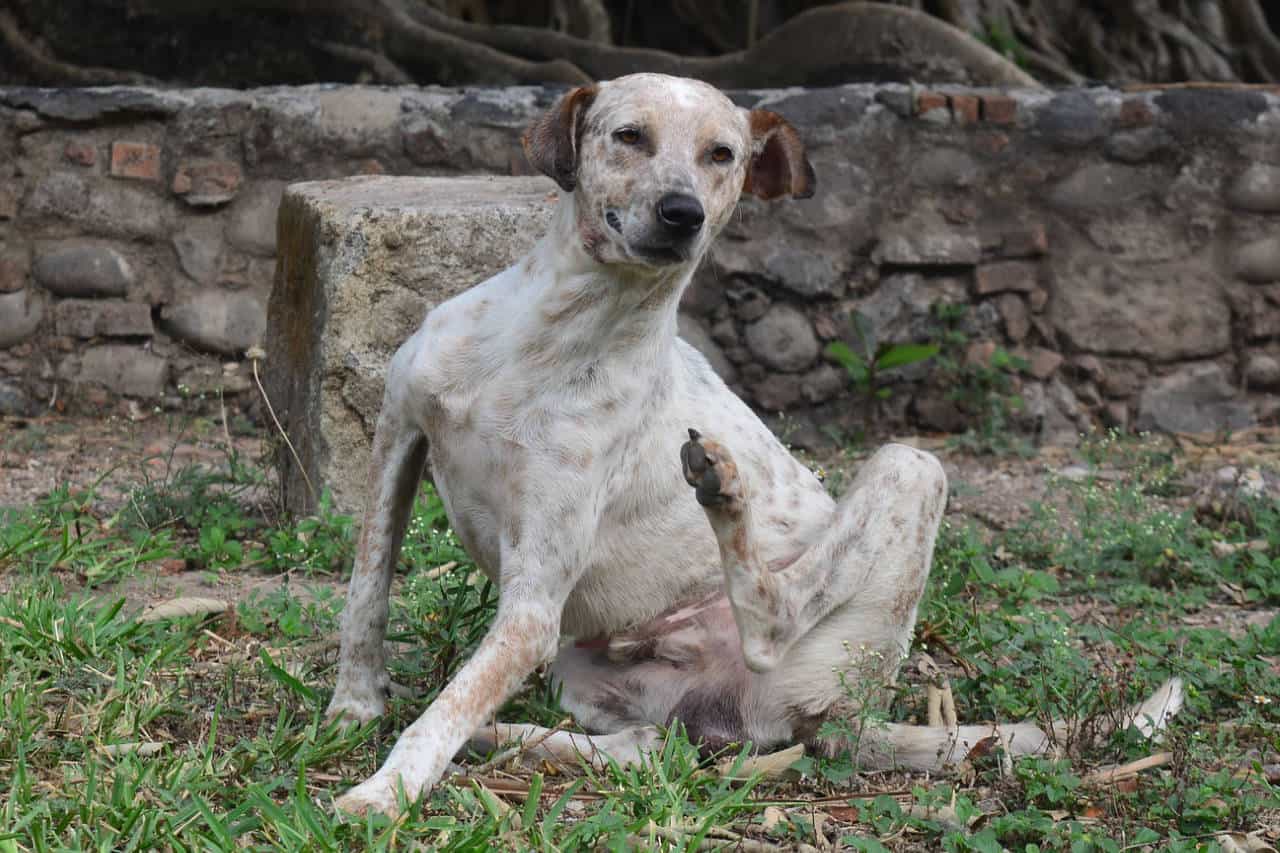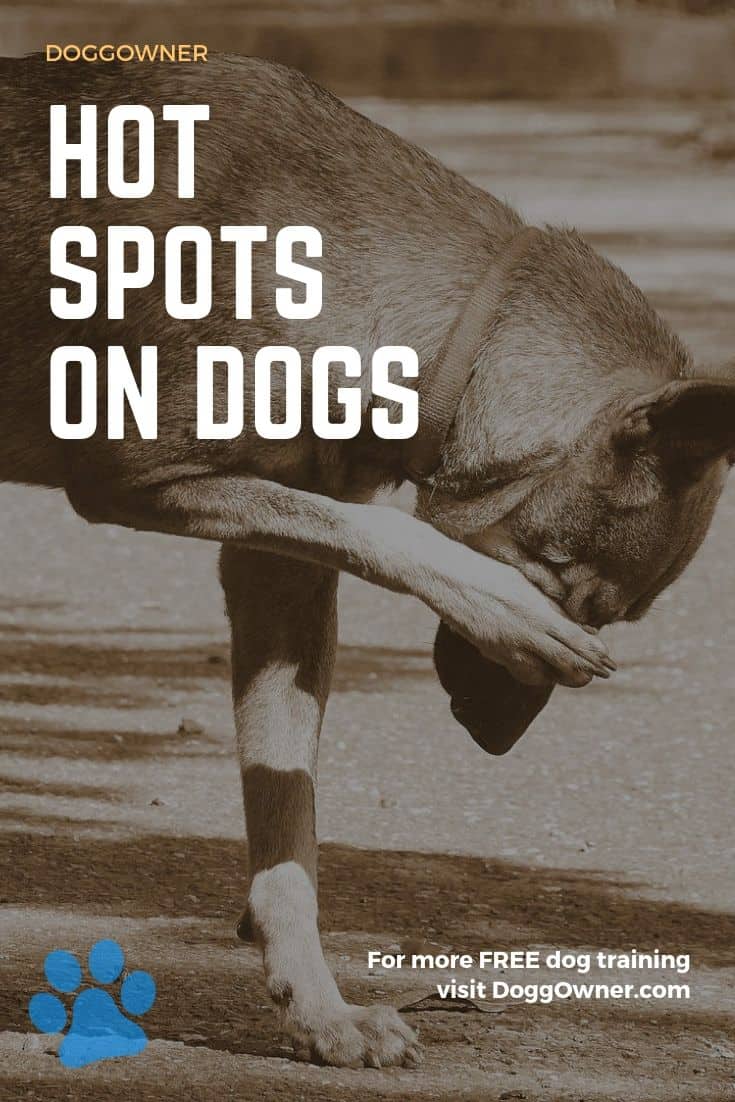Did you know that your dog can actually get dermatitis? Did you know that dermatitis on dogs means hot spots?
Well, both of these things are absolutely true, and they can mean a whole lot of pain and discomfort for your dog.
That’s why it’s important to know what can cause hot spots on dogs and just what you should do about it.
Table of Contents
What Causes Hot Spots on Dogs?
First, let’s take a look at what causes these hot spots.
Also known as acute moist dermatitis, these hot spots happen from a variety of different causes, but they’re more common and prevalent in dogs that have longer fur or those who have a far denser undercoat.
What happens typically is that these dogs will have an allergic reaction to some type of antigen, though they could have other allergies that are either inhaled or food allergies which can cause the hot spots.
Parasites, skin infections, stress, a dirty coat, and even excess moisture trapped under their fur can all cause your dog to develop this type of dermatitis as well.
That’s another reason it’s so important to keep them clean and as healthy as possible.
You want to constantly be monitoring your dog for any signs of discomfort or illness so that you can get them treated quickly.
These hot spots can only be diagnosed by a veterinarian but luckily, there are treatments that you, as the pet parent, can perform.
Also, these hot spots are not transferrable to your other pets or to you.
What Are Hot Spots?
So, next on the list of questions to answer is what are hot spots? They’re actually a lot of what they sound like.
They’re spots on your dog where they lose fur and might have red skin.
The patches then tend to itch, which causes your dog to scratch and irritate the skin even more.
From there, they may have a type of discharge that occurs because of the scratching.
If left untreated these spots can actually become more irritable to the dog and they can actually become infected because your dog continues to scratch at them, tearing open the skin and allowing other bacteria to get into the skin.
The important thing is to figure out what is actually causing your dog’s reaction.
If they are experiencing allergies it’s important to remove the allergen from their proximity.
Which may mean changing the type of food that they’re eating or being careful about different products that you might be using on or around your pets that could be causing allergic reactions.
It’s also important to look at other things that could be causing the problem, which your veterinarian should be able to help you with.
Treating Hot Spots
The first and most important thing you can do if you even suspect that your dog is experiencing hot spots is to visit your veterinarian.
They will be able to properly diagnose them as well as giving you some ideas about what you should do to help treat them.
Make sure that you are initiating treatment right away because leaving it off won’t actually cause the spots to go away. It actually could get even worse.
This is especially true because you won’t know what actually caused your dog’s specific situation.
That means you won’t be able to fix the actual cause. When you talk with your vet they can do an exam and figure out what’s likely causing the irritation.
They can also give you a method of treatment that will target exactly what your dog is experiencing, rather than the more general options you may be able to try on your own.
For example, if your dog’s hot spots are a result of allergies they can recommend changing out the foods that they eat or other irritants they may come into contact with.
They might also recommend things like clipping their hair so their fur doesn’t matt (which could make the hot spots even worse) and they’ll definitely recommend some method of actually treating the wounds themselves.
Different topical antibiotics or steroids or internal antibiotics or steroids can be very beneficial.
Medicated wipes and even a cone can help to keep the area clean and promote healing while keeping your dog from trying to scratch at the area.
This helps it to heal a lot faster and keeps your dog feeling a little better at the same time.
The best thing is that you shouldn’t have to worry about them struggling for long.
That’s because, for most dogs, hot spots can be completely gone within 7 days of treatment, and some see dramatic improvement even sooner than that.
So you definitely want to get your dog into the vet, because the sooner you do the sooner they’re going to be back to their old selves again and they’re going to be a whole lot healthier.
How to Prevent Hot Spots
The best thing you can do is make sure you are giving your dog flea and other pest protection, watching for allergies, getting rid of allergens in their area, taking good care of their brushing, maintaining their coat, and making sure that they’re always warm and dry.
If they’re getting stressed or bored and tend to lick themselves frequently, as a result, you’ll also want to increase the level of activity that they’re getting to help alleviate the boredom.
There are a number of different ways that you can help your dog and make sure that they’re going to be happier and healthier throughout their life, and it only requires you to pay attention and keep on top of things.
Wrap Up
When it comes down to it, taking care of your dog the best you can is only part of the equation.
You also need to keep your eyes open and watch for signs that something might be going wrong.
Hot spots on dogs can be preventable, but if your dog does develop them, getting the right treatment right away is just as important.




